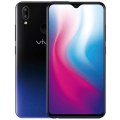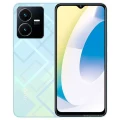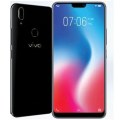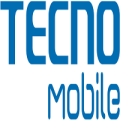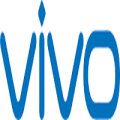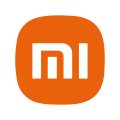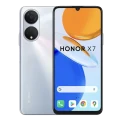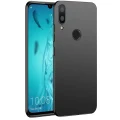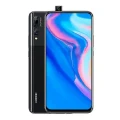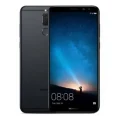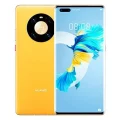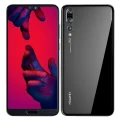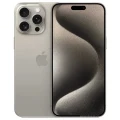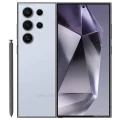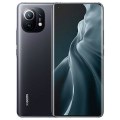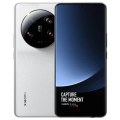Vivo Y75
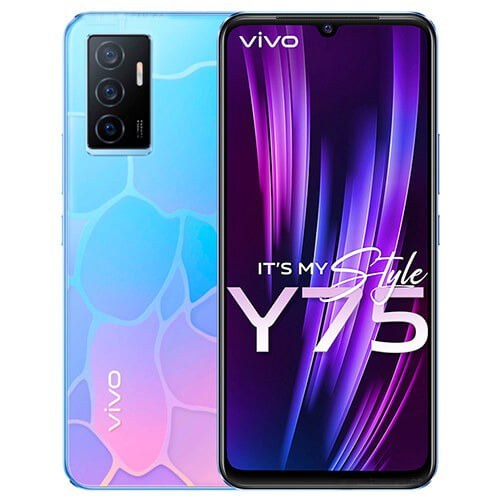


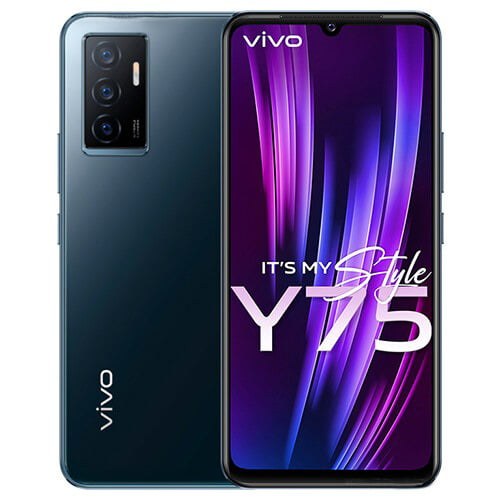
Vivo Y75 Price in Bangladesh
The Vivo Y75 Price in Bangladesh is BDT 25,000. This smartphone comes in a single variant featuring 128GB of internal storage and 8GB of RAM. The Vivo Y75 is powered by the MediaTek Helio G96 chipset, delivering smooth performance for various applications. It is equipped with a 4050mAh battery that supports 44W fast charging, ensuring you can quickly recharge your device. Running on Android 12, the Vivo Y75 combines modern software features with solid hardware, making it a great choice for users seeking a reliable and stylish smartphone.
Specifications
General
| Model | Vivo Y75 |
| Announced | 2022, May |
| Released | 2022, May 21 |
| Status | Available |
| Official price | ৳25,000 |
Design
| Dimensions | 160.9 x 74.3 x 7.4 mm (6.33 x 2.93 x 0.29 in) |
| Weight | 172 g (6.07 oz) |
| Colors |
Moonlight Shadow, Dancing Waves |
Network
| Technology | GSM / HSPA / LTE |
| 2G Network |
GSM 850 / 900 / 1800 / 1900 - SIM 1 & SIM 2 |
| 3G Network |
HSDPA 850 / 900 / 2100 |
| 4G Network |
1, 3, 5, 7, 8, 20, 28, 38, 39, 40, 41 |
| GPRS <strong>GPRS</strong> (General Packet Radio Service) is a packet oriented mobile data service on the 2G and 3G cellular communication system's global system for mobile communications (GSM), Generally, GPRS is used for the purpose of wireless data transfer, such as sharing pictures and videos or browsing the Internet via a mobile phone connection. | |
| EDGE <strong>EDGE</strong> (Enhanced Data GSM Environment) is a wireless network technology generally considered the next step in the 2G network offers data transfer rates up to four times faster than ordinary GSM networks, Generally, EDGE is used for the purpose of wireless data transfer, such as sharing pictures and videos or browsing the Internet via a mobile phone connection. | |
| Speed | HSPA 42.2/5.76 Mbps, LTE-A |
Display
| Display Type <strong>Display Technology => </strong> A number of display technologies and types used in mobile phones => TFT (Thin Film Transistor), IPS (In-Place Switching), OLED (Organic Light Emitting Diode), AMOLED (Active-Matrix Organic Light-Emitting Diode), Super AMOLED (an even advanced version of AMOLED), Resistive Touchscreen (Resistive touchscreens contain two layer of conductive material with a very small gap between them which acts as a resistance), Capacitive Touchsceen (Capacitive touchscreen technology consists of a layer of glass coated with a transparent conductor) | AMOLED capacitive touchscreen, 16M colors |
| Size | 6.44 inches, 100.1 cm2 (~83.8% screen-to-body ratio) |
| Resolution | 1080 x 2400 pixels, 20:9 ratio (~409 ppi density) |
Camera
Main camera
| Camera Setup | Triple |
| Primary <strong>Camera</strong> is able to capture photographs and usually videos, The most important characteristics of a camera are the resolution (measured in megapixels), lens focus type (fixed or automatic), higher megapixel cameras are known to capture higher quality photos, but not always a good measurement of the photos quality. |
50 MP, f/1.8, 26mm (wide), PDAF 8 MP, f/2.2, 120˚, 16mm (ultrawide), 1/4.0&amp;quot;, 1.12µm 2 MP, f/2.4, (macro) |
| Features |
Dual-LED dual-tone flash, HDR, panorama |
| Video | 1080p@30fps, gyro-EIS |
Selfie camera
| Camera Setup | Single |
| Primary <strong>Camera</strong> is able to capture photographs and usually videos, The most important characteristics of a camera are the resolution (measured in megapixels), lens focus type (fixed or automatic), higher megapixel cameras are known to capture higher quality photos, but not always a good measurement of the photos quality. |
44 MP, f/2.0, (wide), AF |
| Features |
HDR |
| Video | 1080p@30fps, gyro-EIS |
Hardware
| Chipset <strong>Chipset</strong> is a group of integrated circuits designed to perform one or a more dedicated functions, often with real time computing constraints, Popular smartphones are equipped with more advanced embedded chipsets that can do many different tasks depending on their programming. | Mediatek MT6781 Helio G96 (12 nm) |
| CPU <strong>CPU</strong> (Central Processing Unit) mostly known as processors, CPU processes instructions in order to carry out certain functions that make your device operate properly. Processors are often described as the brain of computers, smartphones and tablets, Smartphones and tablets rely on processors to carry out their every task, Processors are an incredibly important factor in selecting any type of computing device, including your smartphone. | Octa-core (2x2.05 GHz Cortex-A76 & 6x2.0 GHz Cortex-A55) |
| GPU <strong>GPU</strong> (Graphics Processing Unit) is a single-chip processor designed to rapidly manipulate and alter memory to accelerate the creation of images in a frame buffer intended for output to a display, This includes things such as lighting effects, object transformations, and 3D motion. | Mali-G57 MC2 |
| RAM (Memory) <strong>RAM</strong> (Random Access Memory) is a type of computer memory that can be accessed randomly, any byte of memory can be accessed without touching the preceding bytes that allows information to be stored and accessed quickly from random locations. RAM is the most common type of memory found in computer systems, smartphones, tablets and other electronic devices. | 8 GB |
| Internal Storage <strong>Internal Storage</strong> is a data storage space (flash memory) mostly used in smartphones, tablets and other electronic devices where operating system, apps, music, photos, videos, files and other user data Is stored. | 128 GB |
| Sensors <strong>Sensors</strong> are electronic components that detects and responds to some type of input from the physical environment. The specific input could be light, heat, motion, moisture, pressure and location, The output is generally a signal that is converted to use in computing systems, a location sensor, such as a GPS receiver is able to detect current location of your electronic device. |
Fingerprint (under display, optical), accelerometer, gyro, proximity, compass |
Connectivity
| Bluetooth <strong>Bluetooth</strong> is a wireless communications technology for exchanging data between mobile phones, headsets, computers and other network devices over short distances without wires, Bluetooth technology was primarily designed to support simple wireless networking of personal consumer devices. | 5.2, A2DP, LE |
| Infrared <strong>Infrared</strong> connectivity is an old wireless technology used to connect two electronic devices. It uses a beam of infrared light to transmit information and so requires direct line of sight and operates only at close range. | |
| USB | USB Type-C, USB On-The-Go |
| GPS <strong>GPS</strong> The Global Positioning System is a satellite-based radio navigation system, GPS permits users to determine their position, velocity and the time 24 hours a day, in all weather, anywhere in the world, In order to locate your position, your device or GPS receiver must have a clear view of the sky. | Yes, with A-GPS, GLONASS, GALILEO, BDS |
| NFC <strong>NFC</strong> (Near field communication) is a set of standards for smartphones and similar devices to establish peer-to-peer radio communications with each other by touching them together or bringing them into proximity, usually no more than a few inches. |
Battery
| Battery Type <strong>Battery Type => </strong> Cell phones run on various kinds of batteries depending on the manufacturer, phone size or shape and features. There are basically four types of cell phone batteries => Lithium Polymer, Lithium Ion, Nickel Metal Hydride and Nickel Cadmium. | Non-Removable Li-Po |
| Capacity <strong>Battery Capacity</strong> is a measure (typically in Amp-hr) of the charge stored by the battery, and is determined by the mass of active material contained in the battery. The battery capacity represents the maximum amount of energy that can be extracted from the battery under certain conditions. | 4050mAh Li-Po |
| Charging Charging | Fast Charging 44W, 1-65% in 30 min (advertised) |
The Vivo Y75 Review You Need to Read Before Buying
Introduction
Are you a tech enthusiast, smartphone shopper, or mobile gamer? If so, you’re in the right place. We’re here to give you an in-depth review of the Vivo Y75, a smartphone that aims to strike a balance between performance, style, and affordability. Whether you’re looking to upgrade your current device or purchasing your first smartphone, the Vivo Y75 has some impressive features that could make it your next favorite gadget.
In this review, we’ll cover every aspect of the Vivo Y75, from its design and display to its camera quality and battery life. By the end, you’ll have a comprehensive understanding of what the Vivo Y75 offers and whether it’s the right choice for you.
Design and Display
Sleek Design That Stands Out
The Vivo Y75 is designed with elegance and practicality in mind. The phone boasts a slim profile and lightweight build, making it comfortable to hold and use for extended periods. The back panel features a glossy finish that adds a touch of sophistication, while the edges are smoothly curved to enhance grip.
High-Quality Materials
Vivo has used high-quality materials to ensure durability without compromising on style. The phone’s frame is made of sturdy plastic, which keeps the weight down while providing enough strength to withstand everyday wear and tear. The front is covered by a robust glass that protects the display from scratches and minor impacts.
Impressive Display Features
The Vivo Y75 sports a 6.44-inch AMOLED display with a resolution of 2400×1080 pixels. This results in vibrant colors, deep blacks, and excellent contrast, making it a joy to watch videos and play games. The screen also has a high brightness level, ensuring good visibility even under direct sunlight. With a screen-to-body ratio of over 90%, the display offers an immersive viewing experience that’s hard to beat in this price range.
Performance
Powerful Hardware
Under the hood, the Vivo Y75 is powered by a MediaTek Dimensity 700 processor, paired with 8GB of RAM. This combination ensures smooth multitasking and efficient performance, whether you’re browsing the web, streaming videos, or running demanding applications. The phone also comes with 128GB of internal storage, providing ample space for all your apps, photos, and files.
Real-World Usage
In everyday use, the Vivo Y75 performs admirably. Apps open quickly, and the interface remains responsive even when switching between multiple applications. The phone handles common tasks like messaging, social media, and web browsing with ease, delivering a seamless user experience.
Gaming Performance
For mobile gamers, the Vivo Y75 offers a solid gaming experience. The MediaTek Dimensity 700 processor, coupled with the Mali-G57 MC2 GPU, ensures that most games run smoothly at medium to high settings. Games like PUBG Mobile and Call of Duty: Mobile are playable without significant frame drops or lag, making the Vivo Y75 a good choice for gaming enthusiasts.
Camera Quality
Versatile Camera System
The Vivo Y75 features a triple-camera setup on the back, consisting of a 64MP primary sensor, an 8MP ultra-wide-angle lens, and a 2MP depth sensor. This versatile setup allows you to capture a wide range of shots, from detailed close-ups to expansive landscapes.
Photo Quality
In well-lit conditions, the Vivo Y75’s camera produces sharp and vibrant photos with accurate colors. The large 64MP sensor captures plenty of detail, making it ideal for landscape and portrait photography. The ultra-wide-angle lens is perfect for capturing group shots or scenic vistas, adding an extra dimension to your photography.
Video Capabilities
The phone’s video recording capabilities are equally impressive. It can record 4K videos at 30fps, delivering high-quality footage with good detail and color accuracy. The electronic image stabilization (EIS) helps reduce shake and blur, ensuring smooth and stable videos even when shooting handheld.
Battery Life and Charging
Long-Lasting Battery
The Vivo Y75 is equipped with a 4100mAh battery, which provides ample power to get you through a full day of moderate to heavy use. Whether you’re streaming videos, playing games, or browsing social media, the battery life holds up well, minimizing the need for frequent recharges.
Efficient Charging
When it’s time to recharge, the Vivo Y75 supports 33W fast charging, which can bring the battery from 0% to 70% in just 30 minutes. This feature is especially useful for users who are always on the go and need their phone to be ready quickly.
Software and User Experience
Intuitive User Interface
The Vivo Y75 runs on Funtouch OS 12, based on Android 11. The user interface is clean and intuitive, offering a range of customization options to suit your preferences. From themes and wallpapers to app icons and animations, you can personalize your phone to reflect your style.
Useful Software Features
The software includes several useful features, such as Multi-Turbo mode, which optimizes the phone’s performance for gaming, and Ultra Game Mode, which enhances the gaming experience by blocking notifications and calls. Additionally, the phone comes with a built-in screen recorder, allowing you to capture your gameplay or create tutorials with ease.
Smooth User Experience
Overall, the Vivo Y75 delivers a smooth and enjoyable user experience. The interface is responsive, and the software features add value without feeling gimmicky. Whether you’re a tech enthusiast or a casual user, you’ll appreciate the thoughtfulness that has gone into the Vivo Y75’s software design.
Price and Value for Money
Competitive Pricing
The Vivo Y75 is priced competitively, making it an attractive option for budget-conscious buyers. Considering its impressive features and performance, the phone offers excellent value for money. It’s a solid choice for those looking to get the most bang for their buck without compromising on quality or functionality.
Feature Comparison
When compared to other smartphones in its price range, the Vivo Y75 stands out with its AMOLED display, powerful processor, and versatile camera system. It offers a compelling package that rivals more expensive models, making it a smart investment for tech enthusiasts and everyday users alike.
Insightful Value Proposition
For smartphone shoppers and mobile gamers, the Vivo Y75 presents a compelling value proposition. Its combination of design, performance, and features makes it a worthy contender in the mid-range smartphone market. Whether you’re upgrading from an older device or buying your first smartphone, the Vivo Y75 delivers on its promises.
Conclusion
In conclusion, the Vivo Y75 is a well-rounded smartphone that caters to a wide range of users. Its sleek design, impressive display, and powerful performance make it a standout choice in the mid-range market. The versatile camera system and long-lasting battery further enhance its appeal, while the intuitive software and competitive pricing make it an excellent value for money.
If you’re a tech enthusiast, smartphone shopper, or mobile gamer, the Vivo Y75 is definitely worth considering. It offers a balanced blend of style, functionality, and affordability, making it a great option for anyone looking to upgrade their smartphone experience.
We’d love to hear your thoughts on the Vivo Y75. Share your experiences and join the conversation in the comments below. And don’t forget to share this review with your friends and fellow tech enthusiasts!
